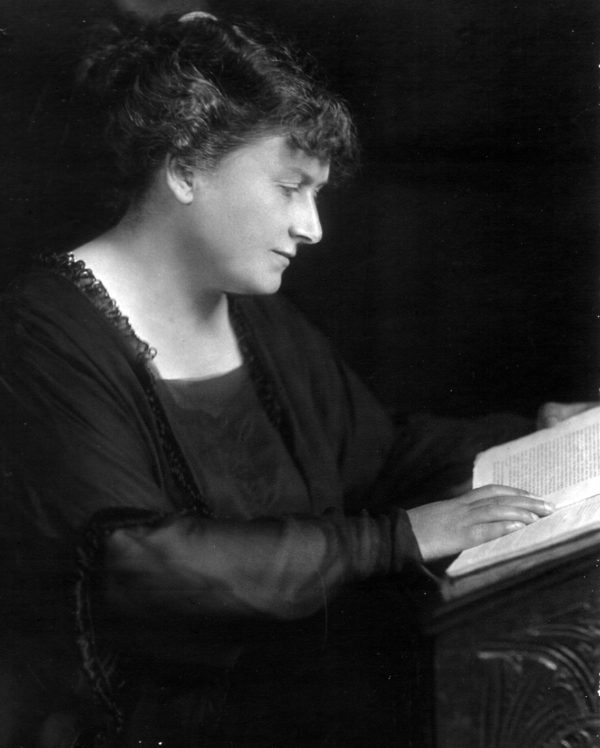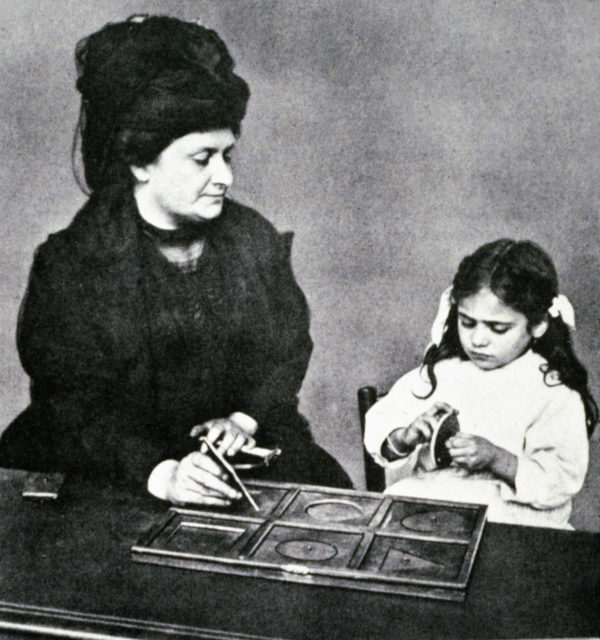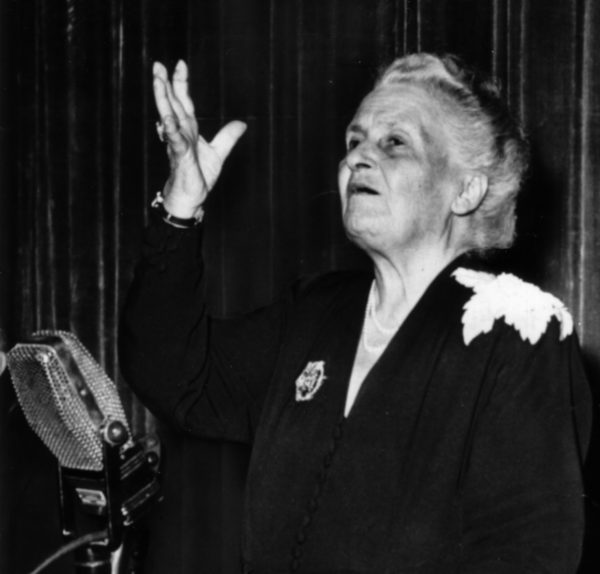Dr. Maria
Montessori
Dr. Maria Montessori

Although Montessori developed her method over a hundred years ago, her insights into development and learning still offer innovation and promise for children all over the world. One of Italy’s first female doctors, Montessori applied her training as a scientist to observations of children.
Maria Montessori was born on Aug. 31, 1870, in the small Italian town of Chiaravalle. Her family soon moved to Rome, where she excelled academically, especially in math and science. At 16, Montessori began to study engineering in the prestigious Regio Istituto Tecnico Leonardo da Vinci, an opportunity she took despite her father’s opposition. She continued on what was an uncommon path for young women at the time, becoming one of the first Italian women to earn a medical degree.

Montessori noticed children’s interest in the kinds of activities they saw around them in their homes, like sewing clothes or washing floors. Doing these tasks helped students become more independent and became a hallmark of the Montessori philosophy that remains evident to this day. Montessori’s original classrooms, with their pint-sized furniture and curious games, attracted worldwide attention. But it was not merely the furniture that drew so much curiosity: children in her classrooms demonstrated a new calm, a peacefulness and cooperativeness uncommon in children’s settings, notable for the initiative children took and purposeful nature of the children’s activities.

Within six years of opening her first school, there were teacher training sites and Montessori schools on five continents, and Montessori’s first book, “The Montessori Method”, had been translated into 10 languages. At the 1915 World’s Fair in San Francisco, Montessori’s new way of teaching children was as mesmerizing as Henry Ford’s Model T automobile and the transcontinental telephone system.
Montessori lectured internationally for the next four decades, until her death from a cerebral hemorrhage in the Netherlands in 1952. During her life, the Montessori Method was introduced on every inhabited continent on earth, and programs for training teachers guided new Montessori teachers as they founded thousands of schools using the method. In the decades since her death, the Montessori Method has continued to expand and evolve, based on a core principle that reflects both Montessori’s life as a scientist and her deep respect for the nature of childhood: follow the child.

Although Montessori developed her method over a hundred years ago, her insights into development and learning still offer innovation and promise for children all over the world. One of Italy’s first female doctors, Montessori applied her training as a scientist to observations of children.
Maria Montessori was born on Aug. 31, 1870, in the small Italian town of Chiaravalle. Her family soon moved to Rome, where she excelled academically, especially in math and science. At 16, Montessori began to study engineering in the prestigious Regio Istituto Tecnico Leonardo da Vinci, an opportunity she took despite her father’s opposition. She continued on what was an uncommon path for young women at the time, becoming one of the first Italian women to earn a medical degree.

Montessori worked at first in psychiatric clinics for children, where she argued that a lack of stimulation was causing many of the patients to be hospitalized for mental and emotional conditions that could be addressed through environmental changes. Montessori’s developing approach reflected her application of the scientific method to understand how people think and learn. In the hospitals and clinics where she worked, Montessori observed children playing and how they experimented with games and toys to help them learn. She used these early observations to design her first school in Rome, the Casa dei Bambini or “Children’s House.” In the Children’s House, children learned to dress themselves by practicing buttons, ties and laces. They taught each other to read and write with cut-out letters they could move around, and learned to count and do math with special glass beads they could hold in their hands.
Montessori noticed children’s interest in the kinds of activities they saw around them in their homes, like sewing clothes or washing floors. Doing these tasks helped students become more independent and became a hallmark of the Montessori philosophy that remains evident to this day. Montessori’s original classrooms, with their pint-sized furniture and curious games, attracted worldwide attention. But it was not merely the furniture that drew so much curiosity: children in her classrooms demonstrated a new calm, a peacefulness and cooperativeness uncommon in children’s settings, notable for the initiative children took and purposeful nature of the children’s activities.

Within six years of opening her first school, there were teacher training sites and Montessori schools on five continents, and Montessori’s first book, “The Montessori Method”, had been translated into 10 languages. At the 1915 World’s Fair in San Francisco, Montessori’s new way of teaching children was as mesmerizing as Henry Ford’s Model T automobile and the transcontinental telephone system.
Montessori lectured internationally for the next four decades, until her death from a cerebral hemorrhage in the Netherlands in 1952. During her life, the Montessori Method was introduced on every inhabited continent on earth, and programs for training teachers guided new Montessori teachers as they founded thousands of schools using the method. In the decades since her death, the Montessori Method has continued to expand and evolve, based on a core principle that reflects both Montessori’s life as a scientist and her deep respect for the nature of childhood: follow the child.
